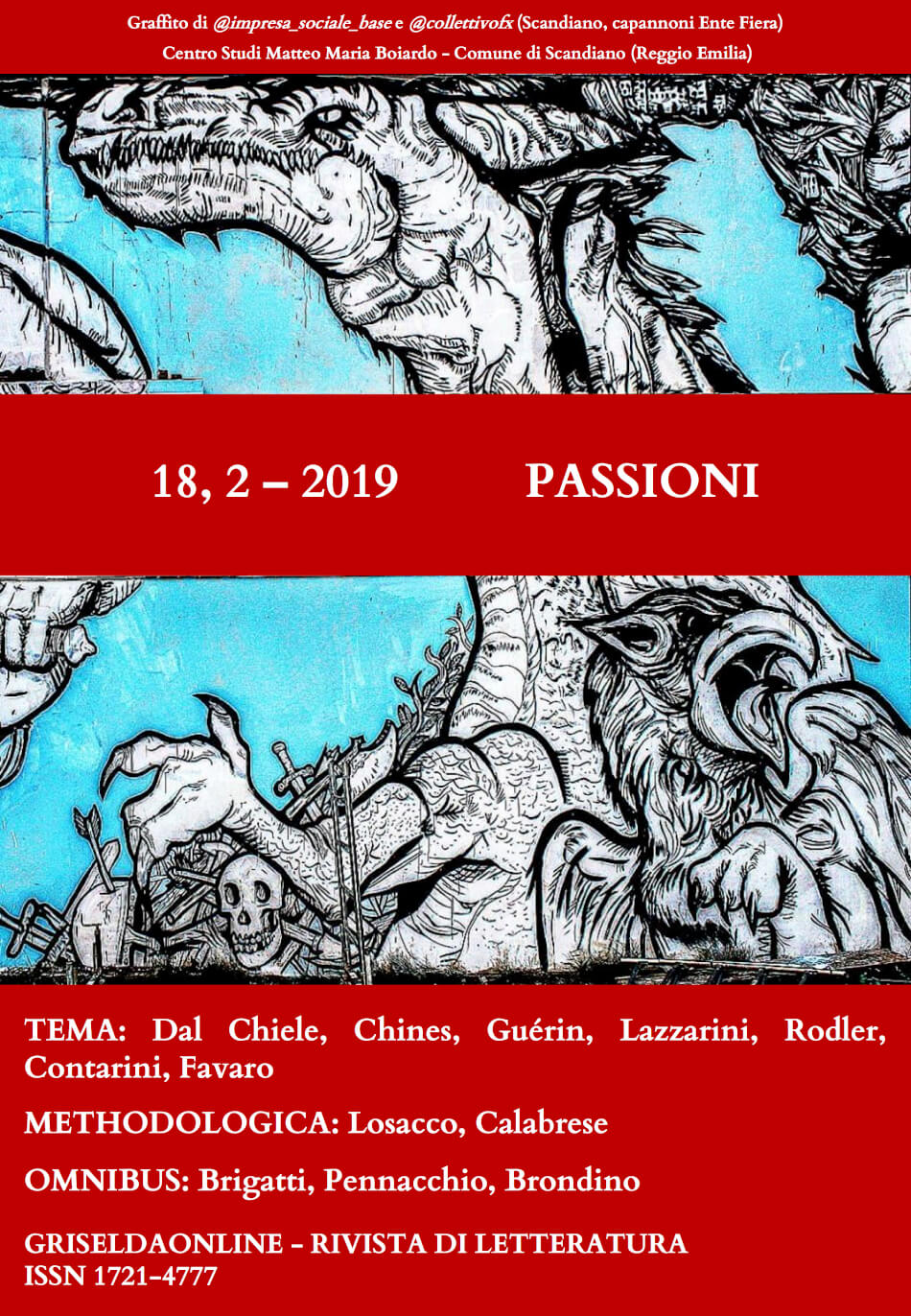A brani. Paratesto e intertestualità in «Gioventù cannibale»
DOI:
https://doi.org/10.6092/issn.1721-4777/9838Keywords:
Cannibali, pulp, Gioventù cannibale, postmodernismo, Aldo NoveAbstract
The article interprets the paratext of Gioventù cannibale an instrument for the construction of a commercial case, as well as a starting point for a critical reassessment of the oeuvre, intended as an example of Italian late-postmodernism. Firstly, cultural models and premises of Italian cannibali are introduced (e.g. North-American pulp, avant-pop, and the refusal of a distinction between high brow and low brow culture). After a brief analysis of the title and the back-cover (the latter also offering unexpected ethical and religious suggestions, a typical trait of Italian postmodernism according to Remo Ceserani), the models of an alleged cannibali esthetic and philosophy, introduced in the premise by Daniele Brolli, are critically highlighted. A presence (the afterword by Emanuele Trevi) and an absence (the biographies of the authors), detected during the comparison between the first and the second edition of the text, allow a reflection on the post-mortem status of cannibali in 2006, yet an unfulfilled promise of Italian literature. Effects of intertextuality, visible in the paratext of the story Il mondo dell’amore by Aldo Nove, are lastly analysed in order to provide an example of the parodic but serious relation between the late 20th-century Italian avant-gardes and cannibali.References
BIBLIOGRAFIA
Amerika, Mark, Avant-pop Manifesto: Thread Baring Itself in Ten Quick Posts, 1998.
Ammaniti, Niccolò et al., Gioventù cannibale, Torino, Einaudi, 1996.
Brolli, Daniele, Le favole cambiano, in Ammaniti et al., Gioventù cannibale, Torino, Einaudi, 2006 (2), pp. V-X.
Cesari, Severino, Dopo i cannibali, «Carmilla online», 4 giugno 2003.
Ceserani, Remo, Modernity and Postmodernity: A Cultural Change Seen From the Italian Perspective, «Italica», LXXI, 3, 1994, pp. 369-384.
Id., Raccontare il potmoderno, Torino, Bollati & Boringhieri, 1997.
Eco, Umberto, Postille a Il nome della rosa, «Alfabeta», 49, 1983, pp. 19-22.
Ferroni, Giulio, Dopo la fine: una letteratura possibile, Roma, Donzelli editore, 1996.
Genette, Gerard, Soglie. I dintorni del testo, Torino, Einaudi, 1989, trad. it. di Camilla Maria Cederna.
Jameson, Fredric, Postmodernismo, o la logica del tardo capitalismo, Roma, Fazi editore, 2015 (1° ed.digitale), trad. it. di Massimo Manganelli, p. 33.
Luttazzi, Daniele, Lepidezze postribolari ovvero Populorum Progressio, Milano, Feltrinelli, 2007.
Nove, Aldo, “Il mondo dell’amore”, in Ammaniti et al., Gioventù cannibale, Torino, Einaudi, 2006 (2), pp. 53-62.
Sinibaldi, Marino, Pulp. La letteratura nell’era della simultaneità, Roma, Donzelli editore, 1996.
Trevi, Emanuele, Spazzatura e violenza: sull’estetica cannibale, in Ammaniti et al., Gioventù cannibale, Torino, Einaudi, 2006 (2), pp. 203-209.
Ventavoli, Bruno, Pulp romanzo. Figli di Pasolini, fratelli di Tarantino, «Tuttolibri», 23 marzo 1996.
Downloads
Published
How to Cite
Issue
Section
License
Copyright (c) 2019 Andrea Brondino
Salvo dove altrimenti specificato, i diritti d'autore di tutti i testi nella rivista appartengono ai rispettivi autori senza restrizioni.
La rivista è rilasciata sotto una licenza Creative Commons Attribuzione - Condividi allo stesso modo 4.0 Internazionale (licenza completa).
Vedere anche la nostra Open Access Policy.
Metadati
Tutti i metadati dei materiali pubblicati sono rilasciati in pubblico dominio e possono essere utilizzati da ognuno per qualsiasi scopo. Questi includono i riferimenti bibliografici.
I metadati – riferimenti bibliografici inclusi – possono essere riutilizzati in qualsiasi formato senza ulteriori autorizzazioni, incluso per scopo di lucro. Chiediamo cortesemente agli utenti di includere un collegamento ai metadati originali.







